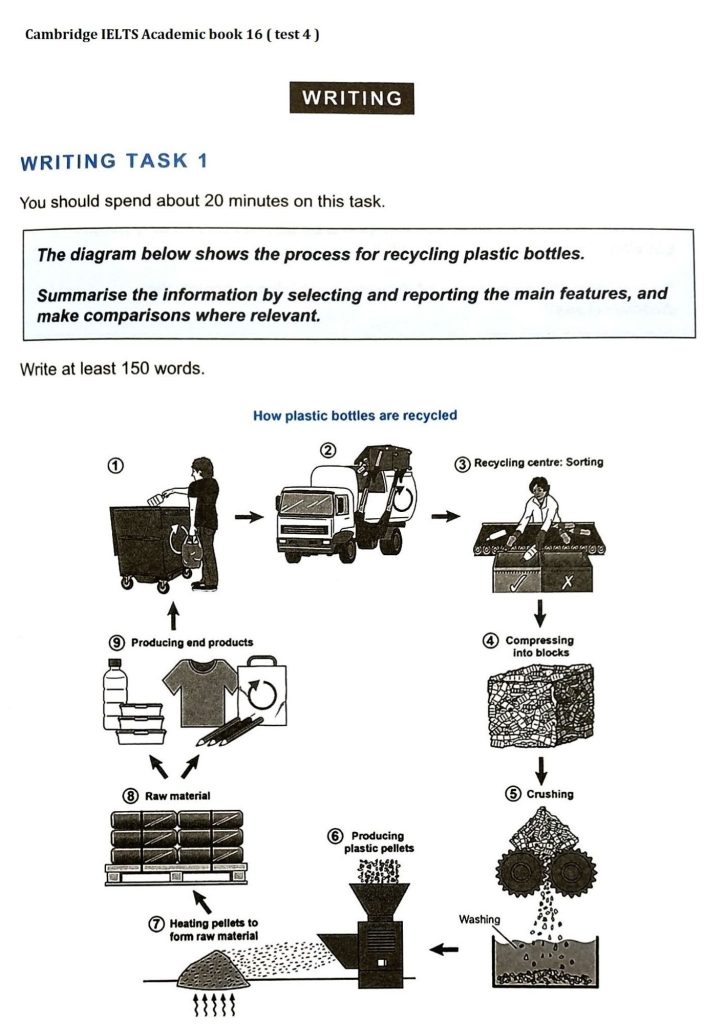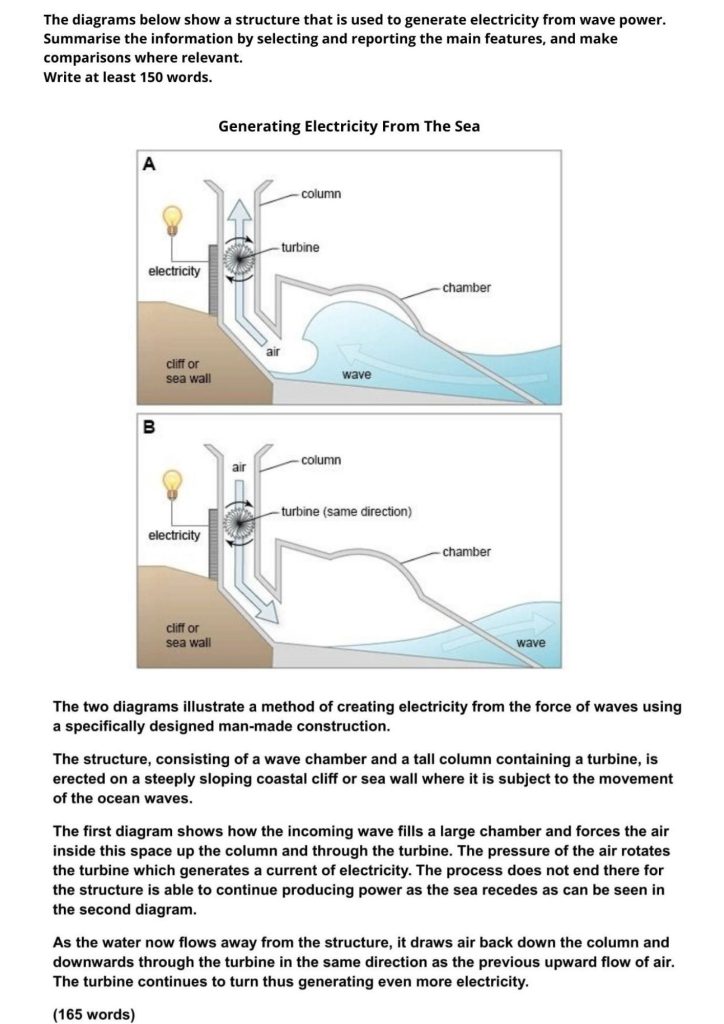How To Write an IELTS Process Diagram Essay
An IELTS process diagram question can contain a wide variety of different types of graphics. It could be a natural process such as the water cycle, a manufacturing process or a diagram of a system.
Using these 5 steps will help you to write a high-scoring process diagram essay:
1) Analyse the question
2) Identify the main features
3) Write an introduction
4) Write an overview
5) Write the details paragraphs
Ideally, your essay should have 4 paragraphs:
Paragraph 1 – Introduction
Paragraph 2 – Overview
Paragraph 3 – 1st main feature
Paragraph 4 – 2nd main feature
Step 1 – Analyse the question
Every question consists of:
- Sentence 1 – A brief description of the graphic
- Sentence 2 – The instructions
- The graphic – process diagram
Sentence 2 tells you what you have to do.
You must do 3 things:
- Select the main features.
- Write about the main features.
- Compare the main features.
All three tasks refer to the ‘main features’ of the graphic. You do not have to write about everything. Just pick out 2 or 3 key features and you’ll have plenty to write about.
Step 2 – Identify the Main Features
The graphic in IELTS process diagram questions should not be difficult to understand. There are not usually any numbers to analyse as in other types of question, just a diagram to interpret or, two diagrams which each show part of the process.
All you are looking for are the main features. These should be the easiest things to spot. There will be lots of information in the graphic to help you identify them, especially, titles, labels and captions.
Here are some useful questions to ask?
1) Is it a linear or a cyclical process?
A linear process starts and finishes at different places. It will often involve the manufacture or creation of something, starting with the raw materials going in at one end and the finished product coming out the other end.
Cyclical process
A cyclical process, on the other hand, is a process that goes back to the beginning and repeats over and over again, such as the life cycle of a frog or a butterfly.
2) Where does the process start and end?
For a linear process this will usually be obvious. It may be harder to determine for a cyclical process so it’s important that you examine the graphic carefully to find out.
3) How many steps are there to the process?
If there are a lot, it can be helpful to number them from 1 to whatever number the final stage is.
4) Can the process be easily broken down into stages?
5) What are the raw materials? What is produced at the end of the process?
These questions obviously apply only to manufacturing processes.
For other types of process, it might be more appropriate to ask the following question.
6) What is the end result of the process?
This question is relevant for our practice IELTS process diagram question which shows a process that creates something using a particular structure. The end result is the production of electricity.
The key features you select will be the starting point for your essay. You will then go on to add more detail later. However, with just 20 minutes allowed for Task 1, and a requirement of only 150 words, you won’t be able to include many details.
We’re now ready to begin writing our essay. Here’s a reminder of the 4-part structure we’re going to use.
Paragraph 1 – Introduction
Paragraph 2 – Overview
Paragraph 3 – 1st main feature
Paragraph 4 – 2nd main feature
Step 3 – Write an Introduction
In the introduction, you should simply paraphrase the question, that is, say the same thing in a different way. You can do this by using synonyms and changing the sentence structure. For example:
Step 4 – Write an Overview (Paragraph 2)
In the second paragraph, you should give a general description of the diagram/s or process. The detail comes later in the essay.
State the information simply using synonyms where possible. No elaborate vocabulary or grammar structures are required, just the appropriate words and correct verb tenses.
Step 5 – Write the 1st Detail Paragraph
Paragraphs 3 and 4 of your IELTS process diagram essay are where you include more detailed information. In paragraph 3, you should explain the first key feature in more detail.
For this question, we will expand on the first stage of the process.
Step 6 – Write the 2nd Detail Paragraph
For the fourth and final paragraph, you do the same thing for your remaining key features or, for this question, the second stage of the process.
Here’s an example of what you could write:



